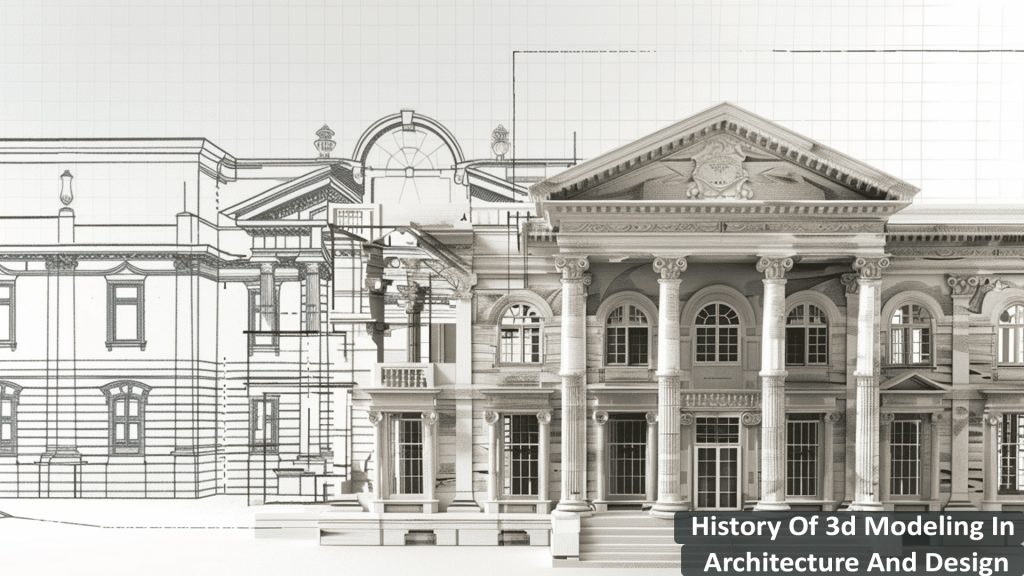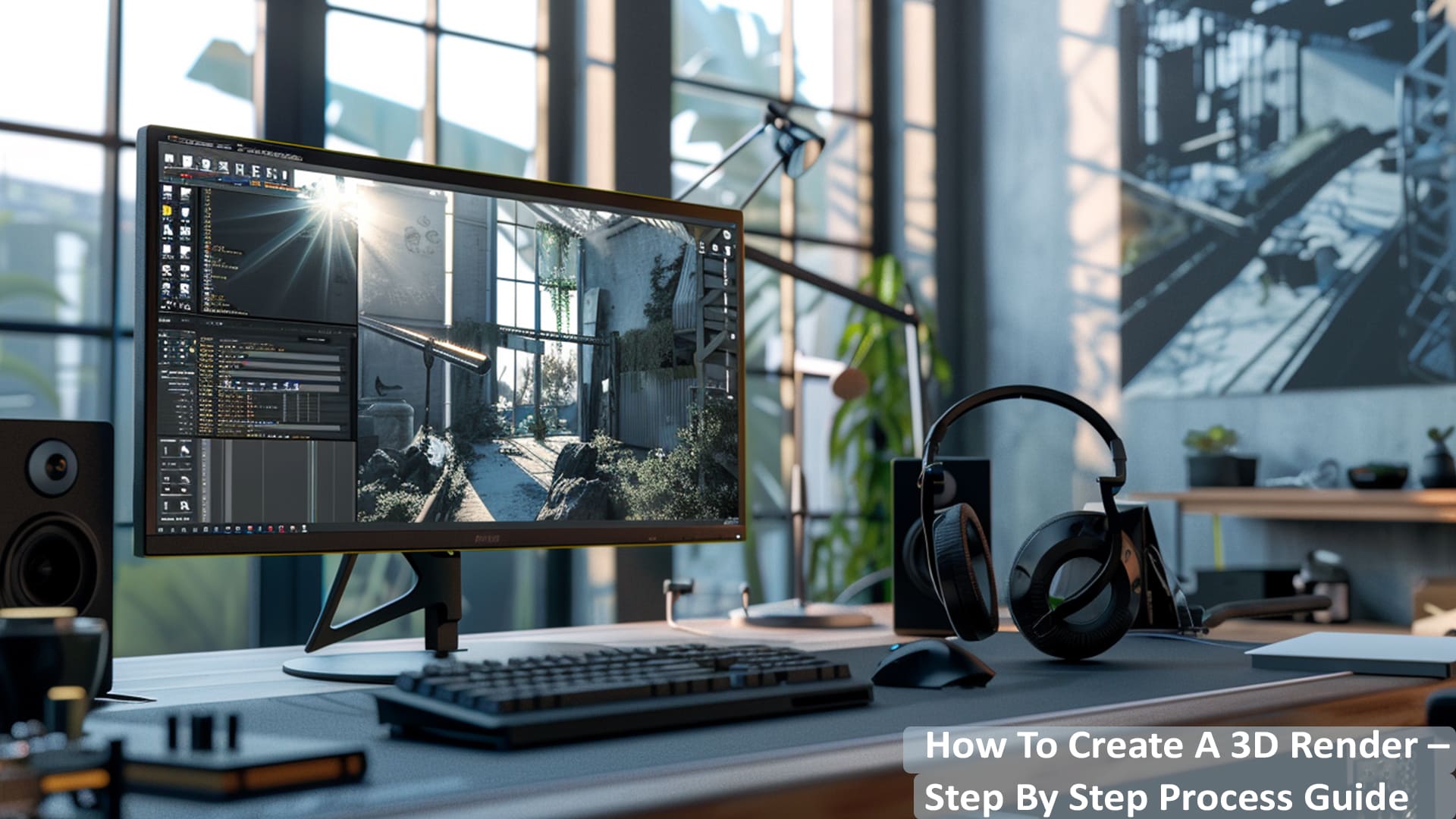Ever wonder how 3D models come into existence or when was 3d modeling invented? What would be their starting like? With this article, you will learn the brief history of 3d modeling along with the rendering techniques and software that made the transformation possible. By studying the roots of 3d visualization, you will gain a new perspective and an appreciation for everything being part of the progress.
History of 3d Modeling in Architecture and Design
Read history of 3d modeling in architecture and design.
1. 1960-1970: How it Began? Sketchpad & 3D Graphic Company
In 1960, only professionals with hands-on in engineering were able to understand the concepts of operating with advanced applications. These mathematical models were only under the radar of top companies and scientists. However, the great pioneer Engineer Ivan Sutherland introduced a Sketchpad that instantly became an important tool for creating graphics.
Sketchpad, (a.k.a Robot Draftsman) was the first CAD (Computer Aided Design) system that proved the use of computers beyond performing mathematical functions only. Further in 1968, he along with his colleague David Evans founded the first graphic company and officially developed Sketchpad which became a blessing for the beginning of 3d modeling for every interested being.
2. 1970-1980: ADAM and Teapot Model
1970 is known as the ultimate year for the rendering of birth. Once the Sketchpad was successfully operated, the zeal to develop graphics rapidly elevated. An automated drafting and machining system (ADAM) was introduced to work on more than one system at the same time. It was also a CAD system and thus many companies began to release different graphic designing platforms.
At the same time, a model called the Teapot model was introduced at the University of Utah and is rendered using techniques namely Gouraud and Phong for adding shading and reflections. A teapot model is popular as it is become an ideal object to test 3d rendering due to its shape, and structure. It has played a great role in understanding, implementing and improving many visual lighting effects.
3. 1980-1990: IBM, UniSolids CAD, AutoCAD & more
Now the gossip about this amazing technology was everywhere. Even IBM introduced its CAD programs that were compatible with many sectors including aerospace, design, automotive and engineering. A firm named Unigraphic introduced their application UniSolids CAD to model solid 3d objects.
Subsequently, later in 1983, two computer engineers, John Walker and Michael Riddle developed the first version of AutoCAD for Control Program/ Monitor and IBM Computers. This was the time when IGES (Initial Graphics Exchange Specification) file format was introduced for documents to be shared easily on various platforms.
4. 1990-2000: Refining CAD Programs and Extending to 3D Printing
We call it the modernization of 3d modeling software. It was a great time for CAD software. Everyone was amazed by its abilities and companies were eager to work and develop more advanced versions. Most companies started using it in interactive product design, and due to its peak usage, the price fell down, making it affordable even for startups & freelancers.
The popular 3d rendering software Blender incepted at this time when people started looking for open-source graphic designing software. Blender significantly had users who were students and learning the basics. It became mostly likeable among learners; they were even certified by the Blender community. By the end of the year 1999, 3d printing software also started making space among designers. However, it needed some modifications in previously developed programs and therefore to gain the advantage of 3d printing technology many new software emerged across the edge.
5. 2000-2010: The Bloom of New Rendering Tools
After the flow of programming various 3d modeling software in the previous years, many and more software was developed at budget-friendly costs, easy to use features, great user interface and more. Top render tools like Revit, Maxwell, and Corona Renderer came up during this crucial period. Also, new versions of Blender were launched.
During this time, 3ds Max was designed especially for architectural industries. Till the year 2005, various 3ds Max modules were formed to create realistic, astute, and quality-rich 3d visuals. All of this great progression lead to terrific success for architects and engineers, making them able to highlight the true beauty and the potential of their projects.
6. 2010-2020: Advancement with Open Source and Smart Rendering Tools
In these past years, the rendering industry has enhanced a lot. We now have endless 3d modeling software for almost every industry under diverse pricing. They are not only affordable but also available on public platforms for free of cost. Some programs are completely free, while others have premium versions, and offer free trials, and annual/ monthly payment modes. Not to mention that these innovative tools have upgraded to the extent that now it become tough to differentiate between a render and a photograph. It all becomes possible with the hard and smart work of engineers and designers, making 3d models’ appearance with great accuracy.
The Intrusive Future of 3D Modeling Technology
No one could have imagined where 3d rendering is now. And we cannot predict what will exactly happen in the upcoming time. We are in a great transition phase where leaders are going cloud to seamlessly produce exceptional photorealistic render. Technologies are combined together to produce another achiever in the industry. For instance, Machine Learning and Artificial Intelligence are combined with designing software to make multiple designs that also invoke Virtual reality and Augmented Reality in rendering. Henceforth, since the beginning, this smart technology has been making remarkable advancements and we can be sure the future is definitely illuminating.
Main Techniques Used by 3D Rendering Specialists – Let us know the vital 3d modeling techniques that designers use to make objects, and put detailing and life into 3d models.
- Polygonal Technique – It is a 3d modeling technique used to develop 3d render surfaces by using polygon meshes. It involves creating objects from small components of triangles and polygons.
- Subdivision Technique – Subdivision rendering technique is used to give details to 3d curvy objects. It works by adding more refined elements and features to shapes making them look real, smooth and fancy.
- Boolean Technique – Boolean technique in rendering expands the horizon of adding creativity to 3d models. It involves using the geometry of one element to improve the geometry of another. This technique combines parts to create new and attractive details in another object without harming the mesh connectivity.
- Box Modeling Technique – Box 3d modeling technique refers to digital sculpting and includes creating a final model from the simple shape by push and pull method. It includes making the resultant object from shapes like spheres, rectangles, cylinders, boxes etc.
The Conclusion
This is how animations and 3d visualization evolved only in a few decades. The history of 3d modeling is long and rich. It is Unstoppable. There was not a single year when it faced a downfall. With the rise in technology, it kept on blooming and the progress has been going on since then. It has developed to the point that every kind of audience can gain its benefits. So, this was it, the great history of 3d modeling, the important people and our tech-savvy software that made it possible for mankind to enjoy the true essence of 3D graphics.








